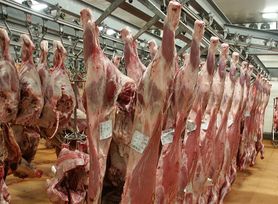US-EU FTA: the food safety boomerang
All the versions of this article: [English] [français]

Journal de l’Environnement | 26 June 2013 | free translation from the French by bilaterals.org
US-EU FTA: the food safety boomerang
by Romain Loury
The French meat industry is getting worried about the negotiations for a free trade agreement between the European Union and the United States, to the point of raising red flags on food safety. Last 14 June, European trade ministers gave the Commission their green light in the form of a mandate to lead the negotiations on the future FTA. Apart from the "cultural exception", one topic worries France and that is the future of the French meat industry, especially the beef sector.
"The negotiating mandate for this deal foresees a massive opening of the European market to beef produced in the US, whose productions standards in terms of the environment, food safety and animal welfare are completely inadequate for French consumers," the National Interprofessional Association for Livestock and Meat (Interbev) declared in a communiqué.
This "trade distortion" could "weigh heavily" on the French industry, it adds. Questioned by JDSA, the Director General of Interbev, Yves Berger, is worried that French meat might be used as a bargaining chip, e.g. sacrificed in exchange for greater access by French cheese exporters to the US market. And this, despite the risk of seeing the French market inundated with cheap US beef coming from feedlots where tens of thousands of cattle are finished off.
From the side of the government, Stéphane Le Foll, Minister of agriculture, assures in a statement that it has "spelled out in the negotiating mandate lines that shall not be crossed in order to protect farming and food industry interests", on a range of issues such as GMOs, growth hormones, chemical decontaminants of meat or animal cloning.
Widely use in the US, chemical decontamination of meat, a process used in the slaughterhouse, has recently been allowed in Europe under an authorisation granted early February for the use of lactic acid on beef carcasses. This issue is highly controversial and has divided EU member states, some of them seeing it as a risk for food security, others seeing it as a bonus.
While France is among those states opposed to its use, the arrival of this new "tool" for food safety makes some professionals in the meat industry happy. For them, the idea is to use lactic acid as a "complement" to the current microbial risk prevention strategies, based on HACCP, and not as a "replacement", which they accuse American slaughterhouses of doing.
Irony of ironies, it was the US Department of Agriculture (USDA) which requested the authorisation from the European Commission back in December 2010, as it considered the ban on lactic acid as a protectionist measure again the US. Now, nothing can stop meat sprayed with lactic acid from being exported to Europe.
"The moment you authorise a technique, it becomes difficult to the explain to the consumer the difference between two products treated differently" — one according to US standards and the other according to European standards — admits Yves Berger. In the negotiations that are about to start, "the positions [of the French industry] on lactic acid will perhaps be not as strong now," he admits.
By the supporting the European authorisation of lactic acid, will the beef sector be shooting itself in the foot? The National Beef Federation seems to think so: "Downstream, the processors were open to this technique while we, the herders, warned that it would open the door to US beef exports," complains their Director General Thierry Rapin.
When contacted by JDSA, the National Meat Trade and Marketing Federation (FNICGV), which seems to be particularly favourable to lactic acid, did not respond to our requests for an interview.





